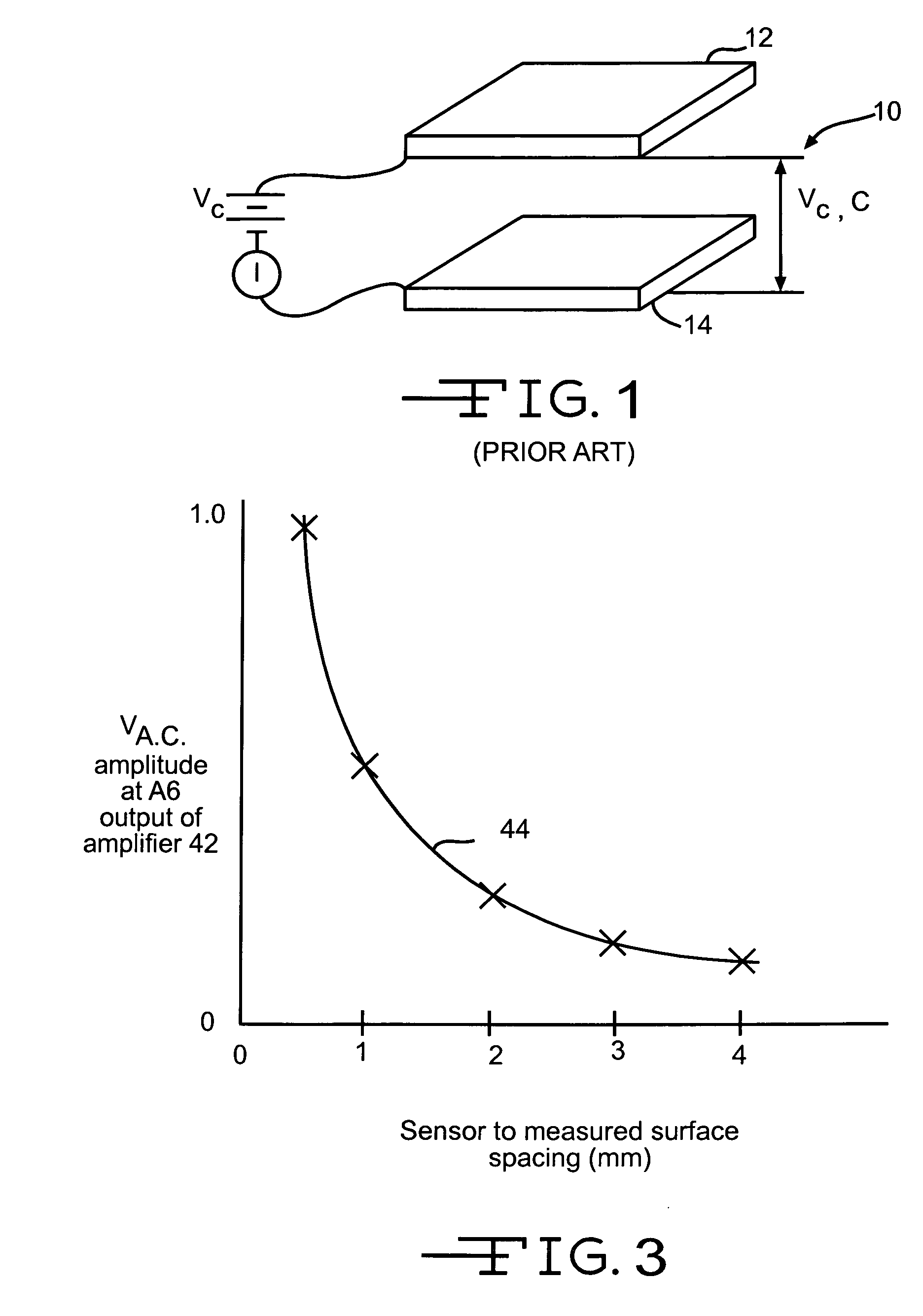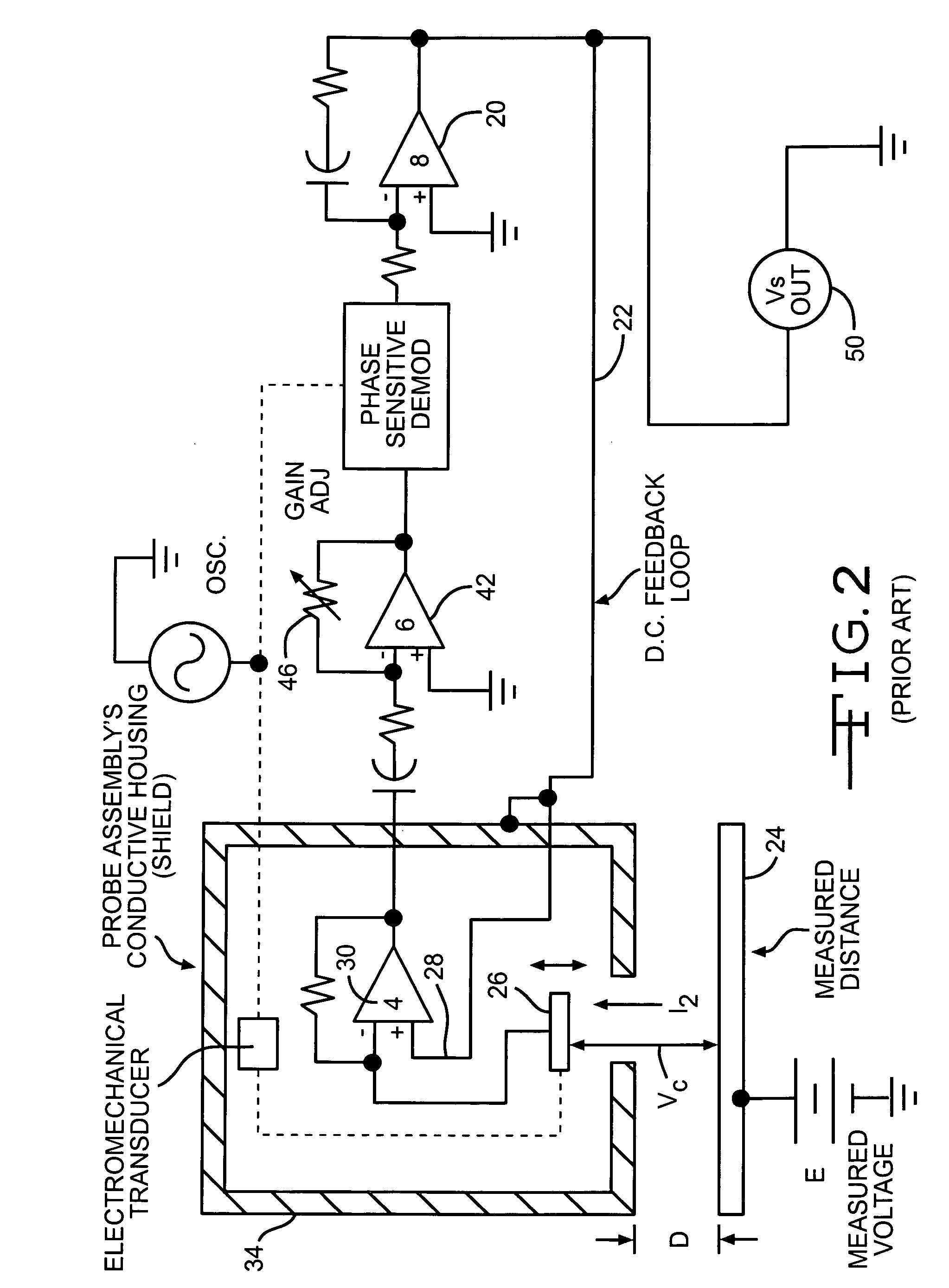Electrostatic Voltmeter With Spacing-Independent Speed of Response
a technology of esvm and esvm, which is applied in the field of electrostatic quantity detection and measurement, can solve the problems of esvm having a tendency to overshoot and become oscillatory, behavior is perceived as a major inconvenience by users of dc feedback esvm, and achieves the effect of stable respons
- Summary
- Abstract
- Description
- Claims
- Application Information
AI Technical Summary
Benefits of technology
Problems solved by technology
Method used
Image
Examples
Embodiment Construction
[0022]The invention presented herein introduces a novel feedback circuit that provides spacing independence of the speed of response of an electrostatic voltmeter. This novel technique provides an AC-type auxiliary feedback loop that provides a means for a DC-feedback ESVM to maintain a fixed gain and thus stable response of the DC loop over a broad range of distances between the sensing electrode and a measured surface. As introduced by U.S. Pat. No. 4,797,620 issued Jan. 10, 1989 entitled “High Voltage Electrostatic Surface Potential Monitoring System Using Low Voltage A.C. Feedback”, a technique was developed to allow a low amplitude AC signal to be used as a feedback signal to the vibrating capacitor sensor as a reference rather than the usual DC voltage as used in prior art devices (as typified by the device of FIG. 2). The disclosure of U.S. Pat. No. 4,797,620 is incorporated herein by reference. This technique of U.S. Pat. No. 4,797,620 produced a low voltage AC output signal...
PUM
 Login to View More
Login to View More Abstract
Description
Claims
Application Information
 Login to View More
Login to View More - R&D
- Intellectual Property
- Life Sciences
- Materials
- Tech Scout
- Unparalleled Data Quality
- Higher Quality Content
- 60% Fewer Hallucinations
Browse by: Latest US Patents, China's latest patents, Technical Efficacy Thesaurus, Application Domain, Technology Topic, Popular Technical Reports.
© 2025 PatSnap. All rights reserved.Legal|Privacy policy|Modern Slavery Act Transparency Statement|Sitemap|About US| Contact US: help@patsnap.com



